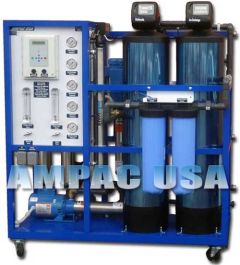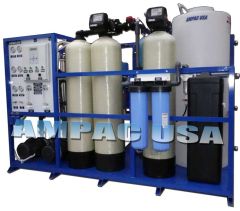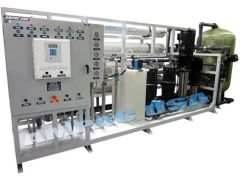Brackish Water Treatment:
Most Brackish Water can be treated with a Reverse Osmosis Water Purification System, however, desalinating brackish water occurs at lower pressure compared to seawater desalination, resulting in more economical process, less energy consumption and more cost efficient.

Standard Reverse Osmosis Systems
Treat water with a salinity concentration of up to 5,000 PPM

Brackish Water Reverse Osmosis
Treat water with a salinity concentration of up to 10,000 PPM

Seawater Reverse Osmosis Systems
Treat water with a salinity concentration of up to 50,000 PPM
All Reverse Osmosis Systems require sufficient pre-treatment to ensure proper production, operation and to preserve its operational life. Pre-treatment process is engineered depending on feed water quality, water conditions and flow rates required.
Under sized pre-treatment process may cause a system overload, increasing the plant’s internal parts damage and usage, requiring more service and maintenance which will interrupt normal operations more often, and this will reduce productivity and increase cost.
Under sized pre-treatment will also increase scaling, fouling and plugging of the membrane elements which is the most expensive part of the reverse osmosis process.
The kind of pre-treatment system that is used greatly depends on feed water quality. Consequentially, sufficient feed water pre-treatment is dependent on:
· The source of the feed water
· The composition of the feed water
· The function of the feed water
We always require an exact water analysis report before we commence the manufacturing process of a reverse osmosis project in order to design and build a complete and a correct Reverse Osmosis system with its pre-treatment, fully equipped and fully automated specifically designed and engineered for the specifications, conditions and the requirements of the project.



























